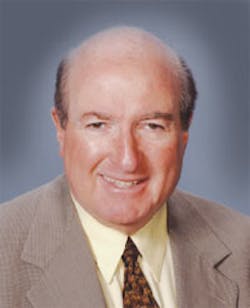President Obama faces a daunting task. He believes that his own popularity and his party’s future are tied to his success in bringing unemployment down to acceptable levels. That task, at least from the point of view of the independent Congressional Budget Office (CBO), is going to be difficult to achieve. Despite the recent uptick in the economy, the CBO was remarkably pessimistic in its projections for recovery from the current 10 percent level of unemployment.
The CBO sees unemployment hovering around 10 percent for the remainder of 2010. This level of unemployment can be politically deadly for the party in office, as the recent elections in Virginia, New Jersey, and Massachusetts demonstrated, and the CBO does not see unemployment significantly diminishing through the time of the fall elections.
The CBO unemployment projections are for a one-half point decline this year and another half next year. That is because the CBO does not see the kind of significant growth in the economy that the Obama administration forecasts. The Office of Management and Budget, which works on behalf of the president sees a robust 4 percent growth returning sooner, which is why it forecasts the budget deficit to be cut in half by the end of the president’s first term (which translates to a still-hefty deficit of $700 billion).
If we are to believe the CBO, the recovery will be slow and frustrating, and we will see none of the strong growth that characterized previous recoveries. After the devastating recession of 1982, President Reagan saw 4.5 percent growth in 1983 and 7.5 percent in 1984. A recovery from a recession caused by a financial meltdown seems to take longer to build up confidence and momentum.
But President Obama also recognizes that he will be judged by his ability to bring the deficit down from its record-setting levels. No matter how he explains it, no matter how he points out that most of the red ink was inherited from his predecessor, American voters are extremely uncomfortable with this year’s projected $1.4 trillion budget deficit. That budget imbalance is a five-fold increase from the numbers that brought voters to the polls to vote for Ross Perot for president. Indeed, that populist sentiment propelled Perot to a polling lead in the early part of the 1992 presidential race.
The voters also remember the claims that President Obama made when he came into office. He predicted that the $787 billion stimulus bill (recently revised upwards by the CBO to $862 billion) would create or save 3.7 million jobs. Unfortunately, the president left the details to the Democratic Congress which pursued a scattershot approach, and of the $499 billion in spending contained in the stimulus, 77 percent remained unspent at the end of its first fiscal year. Moreover, despite predictions, unemployment has gone steadily up rather than down. Recent polls indicated that the American people believe that at least half of the stimulus money was wasted.
Now we are in a debate over the latest “jobs” bills, and the rhetoric of that debate illustrates the president’s dilemma. The choice has to be made between spending more money to reinvigorate the flagging jobs picture or listening to the complaints of Republicans and the conservative Democrats that we simply can’t afford a second round of economic stimulation, whether it comes in the form of government expenditures or even tax breaks and incentives to business.
No matter what the outcome of the “jobs” legislation, there is a growing recognition that we cannot continue to expand the deficit, which is predicted to grow by another $9 trillion over the next decade. The president knows that. The Congress knows that. But a reversal of that trend is not likely to occur as long as it is believed that we can spend our way out of the current cycle of unemployment.
You can help revitalize U.S. manufacturing! Forward this column to your Congressman, local and state government leaders, or your local newspaper editor. Add your own comments on the importance of manufacturing innovation to the health of our economy. Your comments are also welcome at [email protected].
Dr. Paul Freedenberg is Vice President-Government Relations, AMT—The Association For Manufacturing Technology
